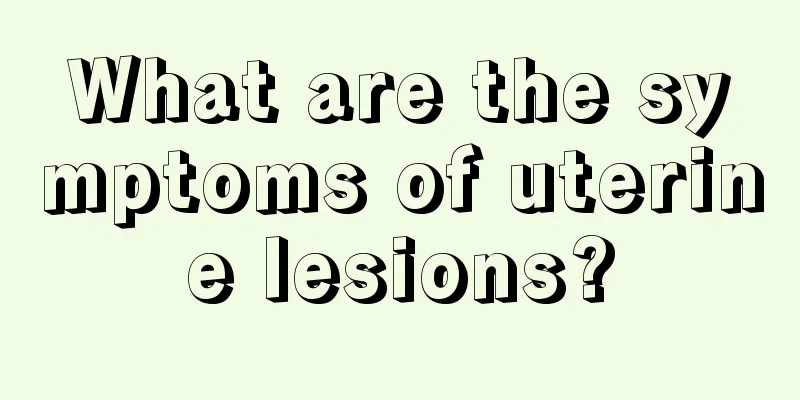Cervical fibroid surgery

|
Uterine fibroids are a gynecological disease. Studies have shown that the occurrence of this gynecological disease is related to excessive estrogen in women's bodies. Of course, to this day the medical community has not yet been able to unanimously define the pathogenesis of uterine fibroids. So what factors are related to the occurrence of uterine fibroids? What adverse effects will uterine fibroids have on the body? Cervical fibroids are relatively rare and are mostly solitary, occurring mostly on the posterior lip of the cervix, but can also occur on the anterior lip or sides. The surgical method for cervical fibroids is determined based on factors such as the size of the fibroids, the location of growth, and the patient's fertility requirements. Causes The exact cause of uterine fibroids is unknown, but it may be related to excessively high estrogen levels in the body and long-term estrogen stimulation. (a) Occasionally seen in women after menarche, more common in middle-aged women, after menopause, fibroids usually stop growing and gradually shrink; (ii) Myomas are often complicated by endometrial hyperplasia; (iii) Patients with ovarian granulosa cell tumors and theca cell tumors (which can secrete estrogen) often have uterine fibroids; (iv) During pregnancy, estrogen levels increase and fibroids often grow rapidly; (V) Exogenous estrogen can accelerate the growth of fibroids. Clinical manifestations The main symptoms are irregular menstruation, increased menstrual blood volume, increased leucorrhea or bladder and rectal symptoms. Some patients have no symptoms. Gynecological examinations may reveal protruding myoma nodules in the cervix or changes in the shape of the cervix. The cervix on the side where the myoma is located is enlarged, while the opposite side is compressed and thinned, and the external os of the cervix is stretched and flattened into a twist shape. Self-Test 1. Abdominal pain Pay attention to pain in the lower abdomen, lower back, or sacrum. Because sometimes, pain is the self-exposure of the tumor. The tumor compresses the tissue, pulls it, and the pedicle twists, ruptures or degenerates, etc., which can cause abdominal pain. 2. Watch out for abnormal bleeding If there are cervical or uterine diseases, such as uterine fibroids or cervical erosion, there will often be increased menstruation, postmenopausal bleeding or contact bleeding. Therefore, any bleeding other than normal menstruation must be investigated and checked in time for timely treatment. 3. Observe leucorrhea Normal leucorrhea is a small amount of slightly sticky, transparent, egg white-like secretion, which is more abundant four or five days before and after ovulation. It has no odor and changes slightly with the menstrual cycle. However, if it is abnormal leucorrhea, pus, bloody, or watery leucorrhea are all abnormal. Abnormal leucorrhea is usually accompanied by an odor and is relatively easy to detect. Many gynecological diseases can cause abnormal leucorrhea. If a woman has abnormal leucorrhea, she must not be careless and must go to the hospital for examination and treatment immediately. |
<<: Pregnancy after stopping dydrogesterone
>>: What is the best food for uterine fibroids
Recommend
Numbness in the hands during early pregnancy may be a sign of fetal arrest
The early stages of pregnancy are a relatively da...
What is wrong with the growth of millet grains on the vulva?
It is very important for women to pay attention t...
What are some famous quotes in the Analects? What do the last three sentences of the Analects mean?
The Analects covers politics, education, literatu...
What are the harms of abortion surgery to the human body
With the progress of society and the opening of p...
What to do if the cesarean section does not pass gas
Everyone knows that the best way for pregnant wom...
What is the temperature and weather like in Yunnan in July? What should I wear when I go to Yunnan in July?
Yunnan is suitable for traveling all year round. ...
What if my period hasn't come for six days?
Menstruation is something that women experience e...
Can you reach this pace? Diabetes risk may be reduced by 39% →
Compiled by: Gong Zixin Type 2 diabetes is a prog...
What is the normal thickness of the double layer of uterine endometrium?
After a routine physical examination, some women ...
Female gynecological diseases
There are many types of diseases that women are p...
World Allergy Day | Contemporary “allergy crisis”: Why are our bodies becoming more and more sensitive?
Today is World Allergy Day. Every year on July 8,...
Why can't women hold their urine?
A few days ago, a patient came to the hospital an...
Food preferences influenced by bacteria: the secret of intestinal flora
We tend to think that bacteria are the "culp...
What is the reason for a girl to have two periods in one month?
Women should not only focus on their appearance a...
Treatment of Trichomonas urethritis in women
Nowadays, more and more women are suffering from ...









